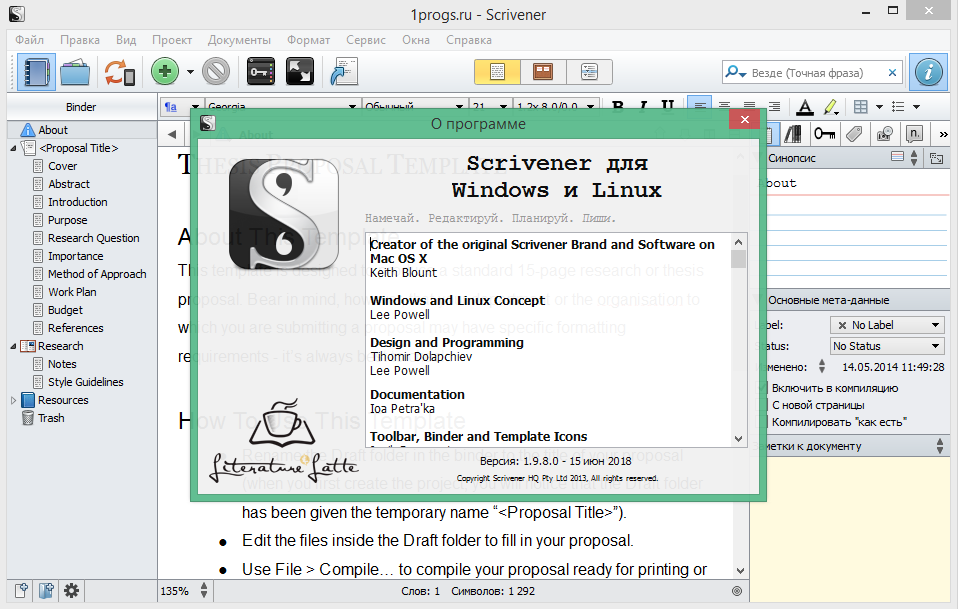When you’re writing a book, you might come to this point where exasperation turns to desperation and you think: “There has to be a better way. There has to be a better piece of book writing software than Microsoft Word.” is the default word processor, but that doesn’t mean it’s the only option. And especially when you’re writing something as complicated as book, you might want a piece of writing software geared specifically toward writing a book. In this post, we’re going to look closely at two of the best pieces of: and, and talk about where each word processor shines and where each falls short. Plus, check out for more tools to help you write better and faster. How Scrivener Saved Me 250 Hours Writing a Book In 2010, I was writing what would become my first book when I got to a point where Word became impossible.
I was in the middle of the second draft, and I kept have to reorganize sections to see what would make the book flow best. This was very annoying in Word. I had to scroll, scroll, scroll, highlight the section, click “cut,” scroll, scroll, scroll to the place I wanted to put it, paste, and then re-read the section to see if I liked it there.
Scrivener combines all the writing tools you need to craft your first draft, from. The tutorial project has been updated, and now includes a new 'Quick Start'. Scrivener User Manual has 4 ratings and 1 review. Matt said: Very long and tedious reading- like all manuals. Useful- but you ha to sift through lots of.
Often as not, I would decide the section I just moved fit better where it first was, and I would have to go move it back. Inevitably, I would forget to copy an important line of text that belonged with the section I was moving and the whole thing wouldn’t make any sense. It was so frustrating. It wasn’t until my second book that I discovered. It was completely different, and there was definitely a learning curve.
Once I got the hang of it, though, I found that I loved how it was geared specifically toward writing books.  And its effectiveness showed in my productivity. My first book, written solely with Microsoft Word, took me 550 hours to write. The second book, written with Scrivener, took me only 200 hours. Of course, some of this was because it was my second book and I had refined my process.
And its effectiveness showed in my productivity. My first book, written solely with Microsoft Word, took me 550 hours to write. The second book, written with Scrivener, took me only 200 hours. Of course, some of this was because it was my second book and I had refined my process.
But I believe Scrivener saved me hundreds of hours of time, not to mention frustration. I’ve finished six books on scrivener, not to mention half-a-dozen short stories, and I every day I learn new ways to use it, depending on the needs of my project.
But let’s break down Microsoft Word and Scrivener’s features so we can see what each is best at. Scrivener vs. Word: Which Is Better Book Writing Software? Both Scrivener and Microsoft Word are effective word processors, but each thrives when used for specific tasks.

Let’s compare the two, specifically as book writing software: Microsoft Word Microsoft Word is available in both ($115) and ($124). Pros: Ubiquity. Microsoft Word is the industry standard, and the default word processor for millions of people. And that is a huge advantage for writing a book. Since almost everyone has Microsoft Word and knows how to use it, it makes it very easy to collaborate using it. For example, most editors edit books in Word and therefore require their clients to submit manuscripts in Word formats (.doc). Great for editing. Word’s track changes feature is great for collaborating with an editor.
It allows you to easily see what changes they’ve made, accept or reject those changes, or completely revert back to the original. Very handy for polishing up your final draft. In fact, for most of my books, I moved them from Scrivener to Word for the editing process to take advantage of this feature.
(However, since Google Docs added “Suggestion mode,” which is the equivalent to track changes, I’ve started using it almost exclusively in replacement of Word for the editing process.). Track Changes Great formatting. Word is a “what you see is what you get” word processor (WYSIWYG or Wizy-wig), and as such, it’s really effective. The way your book looks on the screen as you type it is the same way it will look on the page when you print: if you write the entire book in 18 pt Papyrus font, it’ll stay that way when you send it to an editor or print out a hard copy (and they will be sad because 18 pt Papyrus is a terrible idea).
That makes it easy to see what your formatting will look like from the start and make changes along the way. Simple. For most people, Microsoft Word was one of the first programs they ever used on a computer.